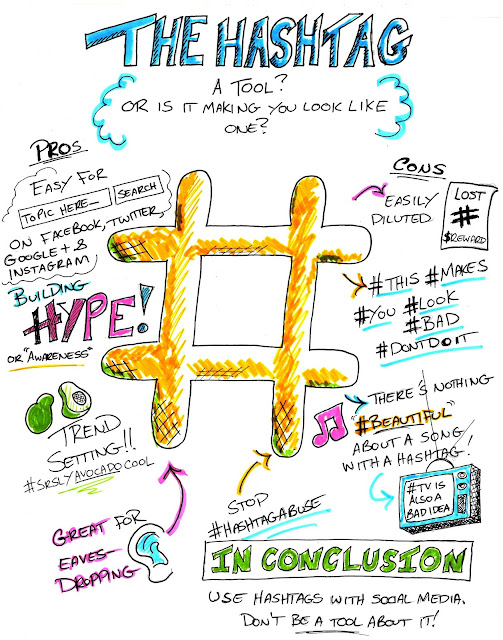Let’s start by defining what a hashtag (#) is in the sense of social media. A simple search reveals this:
(on social media sites such as Twitter) a word or phrase preceded by a hash or pound sign (#) and used to identify categorized messages on a specific topic.Back in 2013 Mashable provided the following description that adds more context as well as some great tips:
The pound sign (or hash) turns any word or group of words that directly follow it into a searchable link. This allows you to organize content and track discussion topics based on those keywords. Click on a hashtag to see all the posts that mention the subject in real time.
Spaces are an absolute no-no. Even if your hashtag contains multiple words, group them all together. If you want to differentiate between words, use capitals instead (#BlueJasmine). Uppercase letters will not alter your search results. Create a brand-new hashtag by merely putting the hash (#) before a series of words. Beyond simply organizing your tweets, Twitter hashtags can help you craft your voice while joining in a broader discussion. You can use multiple hashtags in one tweet, but don’t go overboard.Once only specific to Twitter, hashtags can now be used on Facebook, Instagram, LinkedIn, and even Google+ for the few of us that are still active there. The key to success with hashtags is to know when to use them, the best examples to add to social media messages, how they can amplify work, and knowing which ones to follow. To begin check out the resource page curated by Jerry Blumengarten, otherwise known as Cybrary Man. He has some great lists that can help get you started. Following the simple advice above, my list of strategies to help you get the most out of hashtags is below.
- Get more eyeballs on your ideas and work by using a mainstream hashtag (i.e., #education, #edtech, #pedagogy, #teaching).
- Search hot topics and trends that are categorized by educators thought and leaders.
- Lurk on or join an established chat (see some examples HERE).
- Create a unique hashtag for your classroom, school, district, or organization to communicate information and share your story. Consistently add it to all messages to build a powerful brandED presence. For some great examples check out #ExploreWells and #gocrickets.
- Engage in an online book study or start your own.
- Educate your stakeholders on the why, how, and what, as it relates to hashtags. Don’t assume that they know what these are or how to use them.
- Follow conferences and events from afar. When at an event add the designated # to your messages that share not only the thoughts and ideas of presenters but also ones unique to you.
- Use your hashtag or those that you most engage with, across a diverse array of social networks. Don’t just put your eggs in the Twitter basket.
- Know that hashtags have a different impact depending on the social media site. One that is popular on Twitter might not have the same impact on say Facebook or Instagram.
I am sure there are many more thoughts out there on this topic, and I encourage you to share them in the comments below. Hashtags can occur anywhere in a message. Just don’t get crazy and add too many.


You need to be a member of School Leadership 2.0 to add comments!
Join School Leadership 2.0